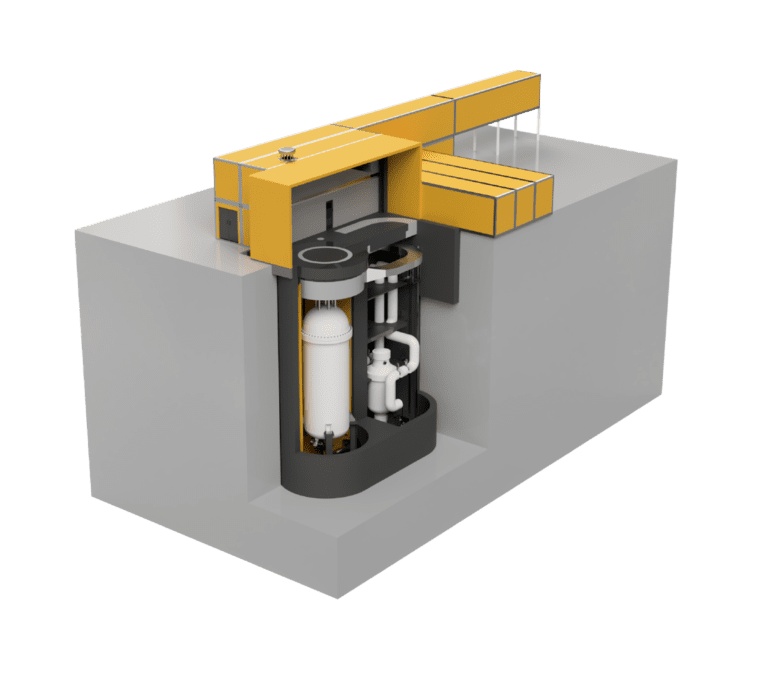Letter from the Editor: First Nuclear Power Stations
Interestingly enough, the first industrial scale nuclear power plant for electrical production was Calder Hall 1, a carbon dioxide cooled reactor that began supplying Great Britain in May, 1956. This reactor and others like it have been reliable, long-lived sources of electrical power.
In the December 1995 issue we focused on the design decisions made by the U. S. Navy submarine reactor designers. As most people involved in the nuclear industry know, the technical direction taken by Rickover and his people had a major influence in the development of the commercial nuclear power industry.
Interestingly enough, the first industrial scale nuclear power plant for electrical production was Calder Hall 1, a carbon dioxide cooled reactor that began supplying Great Britain in May 1956. This reactor and others like it have been reliable, long-lived sources of electrical power. As of March 1995 – when the latest World List of Nuclear Power Plants was published – Calder Hall 1 was still in service.
As late as 1973, the cumulative power production by the gas cooled reactors in France and Great Britain was larger than that of the pressurized water reactors spawned as a result of the submarine program.
Now, however, water cooled reactors represent 80 percent of the installed capacity of nuclear power plants in the world, and even Great Britain – the nation that pioneered the gas cooled reactor design – has begun operating Sizewell B, its first pressurized water reactor.
In this issue, we will continue our investigation of the early days of the nuclear power industry by focusing on the development of the early gas cooled reactors. For a variety of reasons, nuclear leaders in Great Britain and France made choices that were significantly different than those made in America. (Our next issue will be devoted to the market battle between water reactors and gas cooled reactors.)
Different Goals
Following World War II, Great Britain and France had a nucleus of talented specialists who were well versed in the basic characteristics of nuclear fission reactors. In contrast to America, these nations also had a pressing need for a new power source.
Neither France nor Great Britain were sufficiently endowed with indigenous, low cost fuel supplies. Arranging for the fuel to supply their merchant ships, factories and Navies had been an important part of their foreign policy for several decades. France had few fossil fuel reserves of any kind and Britain’s coal mines were becoming more costly as the richest seams were depleted.
In the 1950s, both nations depended on oil from the Middle East for more than 20 percent of their total energy supply. This supply seemed under constant threat from events like the Iranian nationalization of the oil industry in 1951, the Egyptian nationalization of the Suez Canal in 1956 and the threat of Soviet expansion into the region. As a result, electricity cost approximately 50 percent more in Europe than in the United States. There were substantial incentives for making the capital investment needed to develop nuclear powered electrical generating stations.
A second incentive for both the French and British nuclear programs was a national ambition to develop weapons systems that would help these traditional world powers regain an even standing with the Americans in diplomatic matters. The leaders of the infant nuclear industry were thus encouraged to design nuclear power stations that were also capable of producing plutonium for nuclear weapons use.
One final difference existed between Great Britain and France compared to the United States. In the European countries, the national government owned the means of electrical production. There was no conflict implied by having a government owned nuclear reactor that produced both electricity and plutonium. In America, government owned facilities were seen as a competitive threat to privately owned electrical generators. To avoid offending powerful constituents, U. S. materials production reactors were designed to treat the heat produced in plutonium production reactors as a waste product instead of as a source of valuable energy for electricity production.
Different Constraints
The British and the French nuclear leaders also had a different inventory of resources compared to the Americans. They did not have an extensive nuclear industrial infrastructure; in particular they had no facilities for enriching uranium.
They also did not have their nuclear expertise dispersed throughout a network of laboratories with a history of enforced independence. (General Groves, the leader of the Manhattan Project, farmed out different specialties to the laboratories and enforced strong compartmentalization to enhance security.)
They did not have a program to develop space constrained nuclear engines that involved the major electrical equipment supply companies. They did not even have access to their American colleagues because of the security provisions of the Atomic Energy Act of 1946.
Their main nuclear assets were a cadre of technically competent scientists and engineers, a desire to succeed, a set of basic materials, and general agreement within the populace that developing nuclear energy was a good idea for the country.

